Today, on April 30, 2023, it marks our first-year anniversary with my beloved stallion Yazan. However, I am currently contemplating whether I should geld my 15-year-old stallion.
As with any equestrian partnership, Yazan and I have experienced both highs and lows over the past 12 months. He is my second horse, and I believe I am the third or fourth owner to care for him. To the best of my knowledge, I am the first person to have formed a bond with him.
Yazan’s previous life as a racehorse involved years of grueling work on the track. While he received excellent physical care to optimize his performance, he did not receive much attention regarding his mental well-being or basic ground training. He was primarily seen as a machine bred to win races and produce offspring, not as a living, feeling being.
As a result of his past experiences, Yazan has exhibited both physical discomfort and unbalanced stallion behavior.
The first year with my stallion
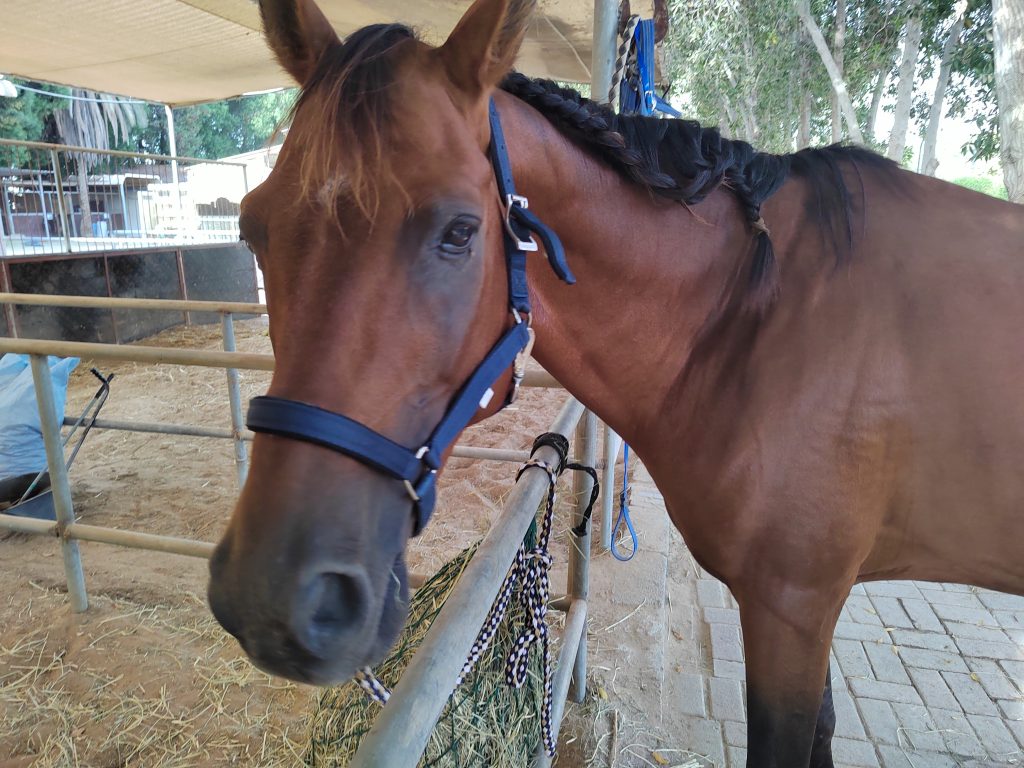
When I acquired Yazan last year, he was in such poor physical and mental condition that he quickly became the sweetest and saddest horse in my heart. Although I lacked experience with stallions and had no intention of buying one, I chose him out of many horses. In this article I listed all the questions you need to ask yourself when buying a horse. I will suggest a reading in order to avoid making decisions like this after purchasing.
Over the past 12 months, we have worked together to restore his health and address his bowed tendon. We also focused on implementing basic safety rules from the ground and saddle, as well as building his confidence when approaching obstacles and new experiences. While he is not the spookiest Arabian horse I have encountered, he can become unsettled when faced with unfamiliar sights or sounds.
Throughout our time together, Yazan has shown me that with patience and consistency, he can handle any challenge that comes his way.
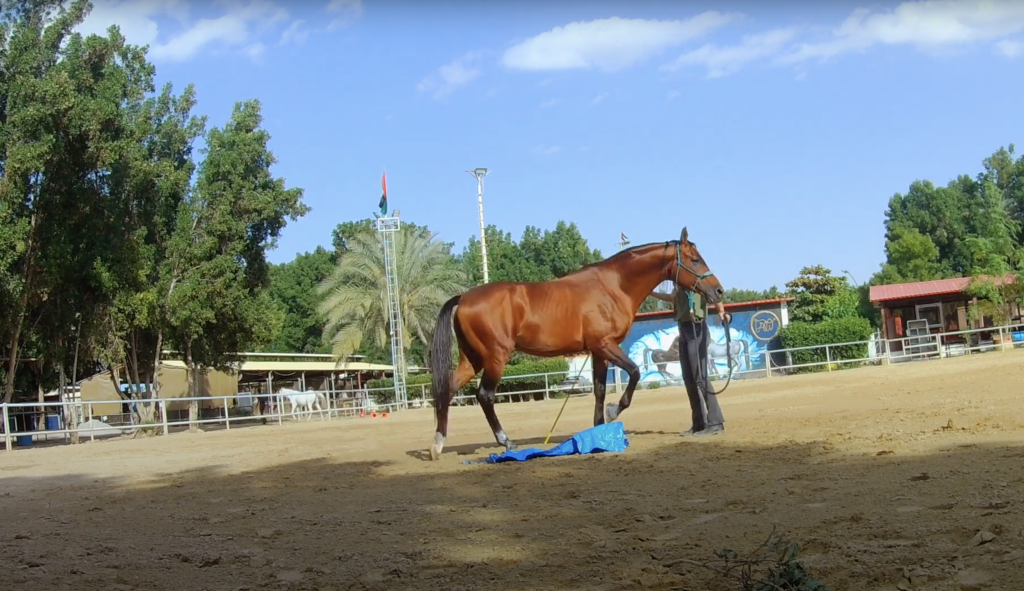
Know the context
I had never considered gelding Yazan until very recently. When the thought crossed my mind, I sought the opinions of veterinarians and experienced equestrians, scoured the internet for information, and looked into Yazan’s eyes to determine if this was the right decision.
In the following paragraphs, I will list the reasons and episodes that have led me to consider gelding Yazan, as well as the potential drawbacks of such a decision. As you read through my reasons, I ask that you keep in mind the context of our relationship as owner, trainer, friend, and rider. My experience with horses spans five years, four of which were spent in Italy, where horses are handled differently from the UAE. Had Yazan been in Italy, he would have likely been gelded much sooner, possibly after ending his breeding career.
However, my past experiences with horses have not been entirely positive. In particular, I suffered a significant arm injury that resulted in PTSD, and whenever something remotely dangerous occurs, my mind transports me back to that moment.
Why should I geld my stallion?
That being said, there are several other reasons why I now believe I should geld my 15-year-old stallion, Yazan.
Not planning to breed him

After Yazan ended his racing career, he bred two mares in 2018. Based on the information on his passport, he did not work as a stud before or after that season. A couple of months ago, I considered offering him as a stud due to his pedigree that includes five generations of racing horses, and his sire Jaib De Carrere, who looks like the breeding machine of racing horses. However, I have no knowledge of how the equine breeding industry works, especially here in the UAE, and the idea died a few days later. I abandoned the project of becoming a breeder and one of my biggest dreams of having one of his foals to grow with us.
Stallion life is a competition
Life with a stallion can feel like a constant competition. It’s one thing to deal with forward horses, but it’s another thing to deal with unpredictable mood swings. I know from the bottom of my heart that I’m not the right rider for a forward horse. Luckily, Yazan is not naturally forward. He’s an introvert and an energy saver, according to the Parelli Horsenality profiles, and falls under the left brain-introvert category. When we go out for solo hacks, I never find myself struggling to slow him down or pulling on his mouth to keep him from breaking into a trot or a canter. He knows to wait for my cues. I’ve ridden him bitless for a year now, but there are some “buts” in this.
We always go out on our own, far from the popular endurance tracks. In Dubai, at the Al Ruwayyah desert where our stables are located, there aren’t many trails to choose from. You either go straight to the desert tracks (two different ones) or you take a stroll around the farms. I’ve tried going on the tracks about two or three times. Every time I approach them with a calm stallion until someone passes by cantering, even 2-300 meters away from us. That immediately puts Yazan on edge. His energy level changes in a matter of seconds, and the only reaction he knows is to explode into a galloping frenzy.
One of the first times we went out together, we joined a walking group. We arrived in the middle of the desert to turn onto some dunes and then head back to the stable. In this group, there were beginner riders with very calm horses. The moment we turned our horses, Yazan curled up like a spring to prepare for a run, taking a couple of very powerful canter strides until I managed to slow him down. That scared me a lot. One second he was completely relaxed, with his head down and giving me no clue about his next reaction. The next second, he was ready to bolt.
Another time, I believe God saved me. I was riding him bitless and bareback on our usual trail around the perimeter where the farm ends and the desert begins. I decided to dismount for some reason I can’t even remember now. Just a couple of seconds after I started hand-walking Yazan, a “shooting horse” passed by. A shooting horse is a saddled horse that loses its rider in the desert and gallops back to the stable with no regard for anything else in the world. The moment this happened, Yazan reared up and prepared to gallop. I pulled him back with the lead rope, but he looked at me like I was his worst enemy and started challenging me by taking very close circles around me. It took me around ten minutes to calm him down. Maybe, gelding my 15-year-old stallion is the best option I have.
Quality of life
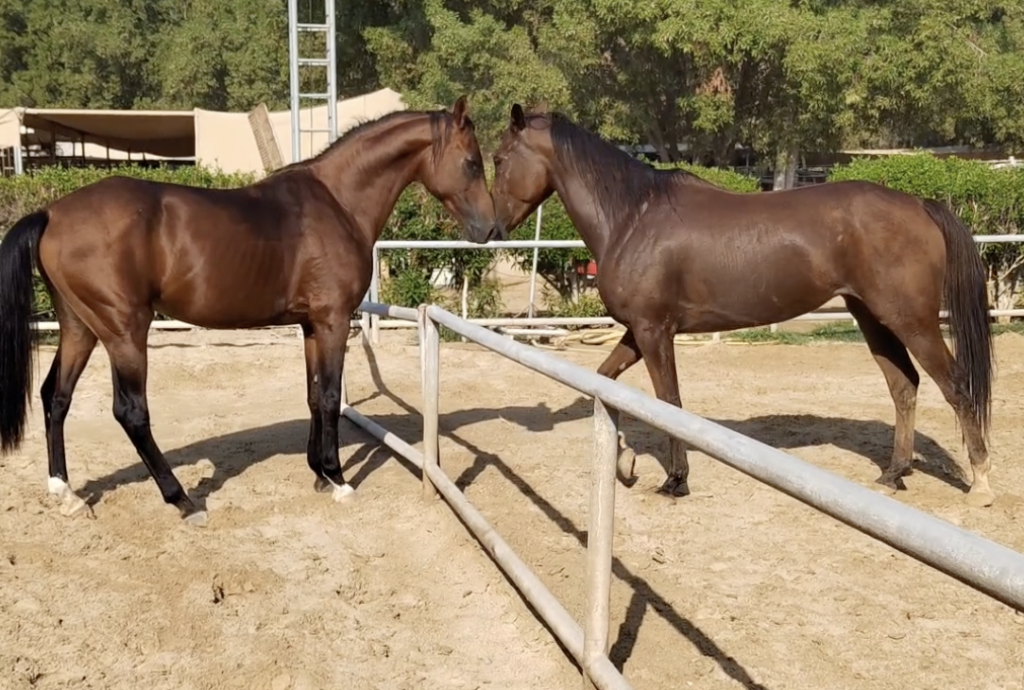
The stark reality is that Yazan is currently living in a large stable that houses more than 150 horses, but he is not allowed to make friends. He is surrounded by mares, geldings, and stallions, and no matter how much time I try to spend with him in the arena, walking him around, he is never allowed to roam free with other horses. While my stable friends enjoy watching their horses run free in the herd, Yazan is always left alone in the nearby small arena. This truly breaks my heart every time I look at him. By gelding him, as a 15-year-old, he may not act as a peaceful gelding, but at least I would be able to introduce him to other geldings and potentially watch him develop a healthy social life. This is probably one of the main reasons why I’m considering to geld my 15-year-old stallion.
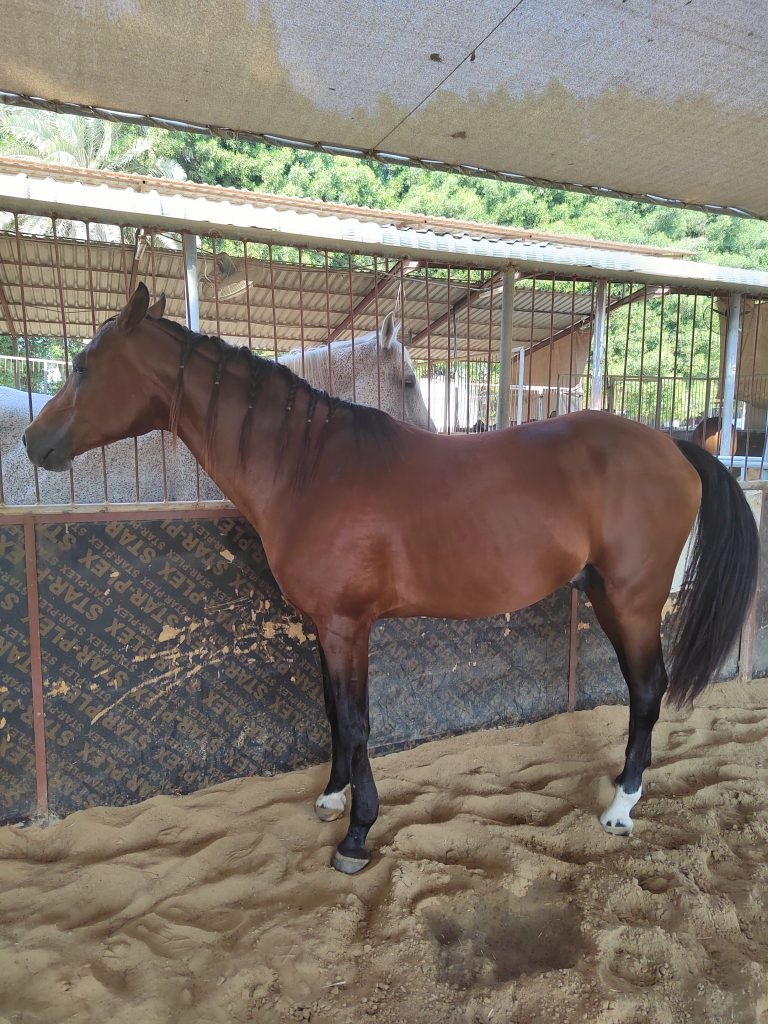
Aggressive ways of saying “no”.
Overall, Yazan is an easy stallion to handle. He doesn’t create any drama around mares or other horses in general. However, he can be very mouthy, and I’m currently working on this by backing him up every time he touches me to nibble on my shoulder. I started working on ground work exercises with him pretty late, and I have to admit that I wasn’t very experienced myself. The first few times I tried lunging exercises with him after purchasing him, he either refused to move or came towards me to make me move out of the way. Since I didn’t have experience with this, I decided to pause the work. I tried again just a couple of months ago when riding him wasn’t an option because he was behaving badly in the arena, bucking every 2-3 strides. I figured out that the saddle wasn’t a good fit anymore, and in the video below, I explain the whole story and show our most painful groundwork session together.
Please be gentle with me. I know there’s a lot that I’m doing wrong, and that’s why after this event, I decided to take lessons from a much more experienced horseman, who helped me and Yazan a lot.
After calling for help, we focused solely on groundwork for a month and a half, and we generally reached a very good point where Yazan doesn’t blow up when I ask him to trot or canter. However, the positive outcomes of our sessions are sometimes affected by his mood on specific days.
There are times when he picks up the energy of stressed horses around us and ends up charging me for no apparent reason. Maybe that day he feels particularly lazy, so if I ask him to go, he faces me instead. He then decides to go until he’s had enough and tries to charge me to make me stop. I’m now at the point where I’m afraid to tie the lunging rope on him, and I do it with shaking and sweating hands. This is completely ruining my willingness to work with him or with other horses in general. Even though I don’t expect or assume this aggression to stop just because I’m gelding my 15-year-old stallion, I hope that Yazan will show more willingness to partner up with me instead of fighting against me.
Put a stop to the moodiness
I go to the stables about 3 or 4 times a week, sometimes even 5. Each time, I spend at least 2 to 4 hours with Yazan, grooming him, riding him, lunging him, hand walking him, letting him snack on some grass, and allowing him to roll and run free in the arena. I always add variety to our routine while maintaining solid foundations. I never rush things with him and always ensure that we end on a positive note. I have to admit that I am proud of myself and the patience I have gained since purchasing him. This is all thanks to Yazan.
However, this complex program sometimes does not seem to be enough with a stallion. In a 24-hour day, I only spend 1/8 of the time with him. Despite making sure that my groomer takes care of him when I am not there by putting him in the walking machine or letting him run free in the arena, I cannot be certain of what happens during the rest of the time that we are apart.
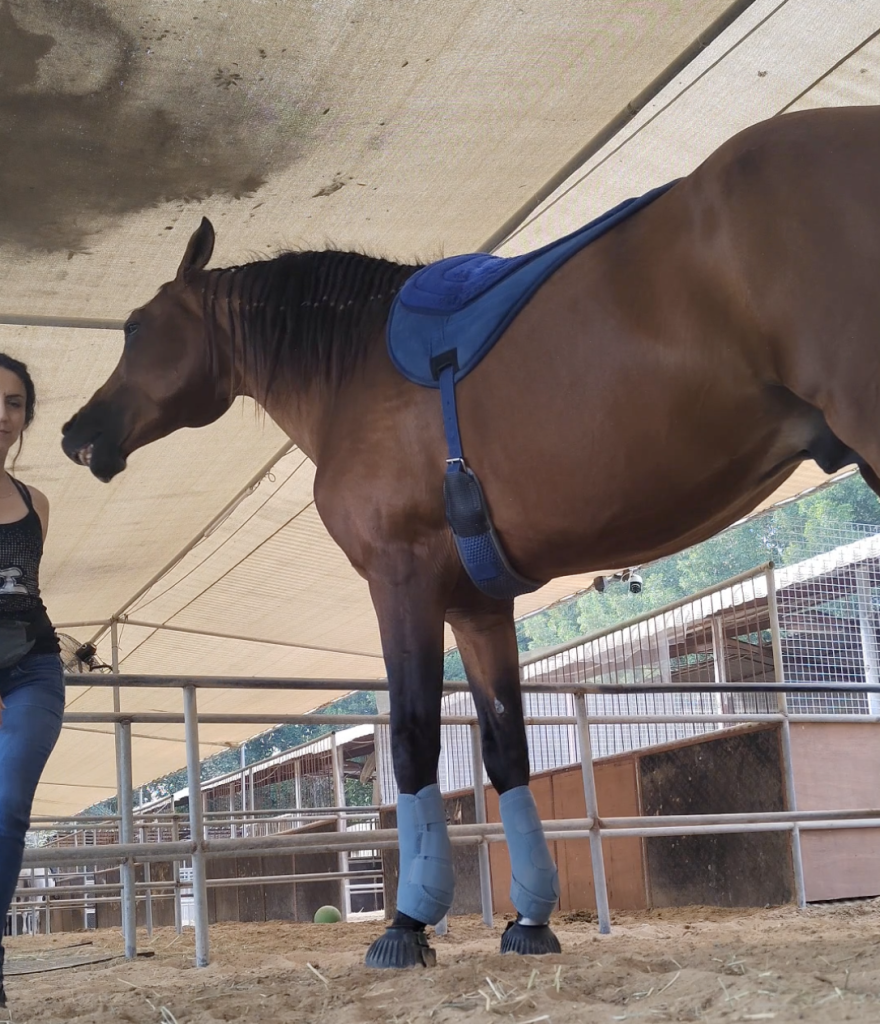
People have told me things like, “Yesterday, Yazan was acting crazy all day!” or “He was fighting with the neighbors” or “He just didn’t stop running in circles.” But when I show up at the stables, all I see is a calm horse eating hay as if nothing is bothering him. Perhaps a mare walked by and distracted him, maybe he wasn’t handled properly by his groomer, or perhaps all the mares are in heat. There are many possible reasons.
Every time I go to the stable, I spend about 10 minutes assessing his mood and plan my agenda accordingly. After deciding to add 20 minutes of lunging as a must before any other activity, it helped me to determine his mood before blindly taking him out for a ride. However, each day for me and Yazan is never the same. While I watch other equestrian friends finding the same horse almost every day, I have a completely different horse every day. I cannot afford to take days off. Even if I have my period and do not feel like going to the stables with stomach cramps, I cannot skip the day. I will not find the same horse when I show up at the stables after three days.
I am just tired of this. I understand that it helps us learn and become stronger, but sometimes I just need things to be “easy”. Do you think that gelding my 15-year-old stallion will make a difference?
Is gelding a 15 years old stallion the right choice?
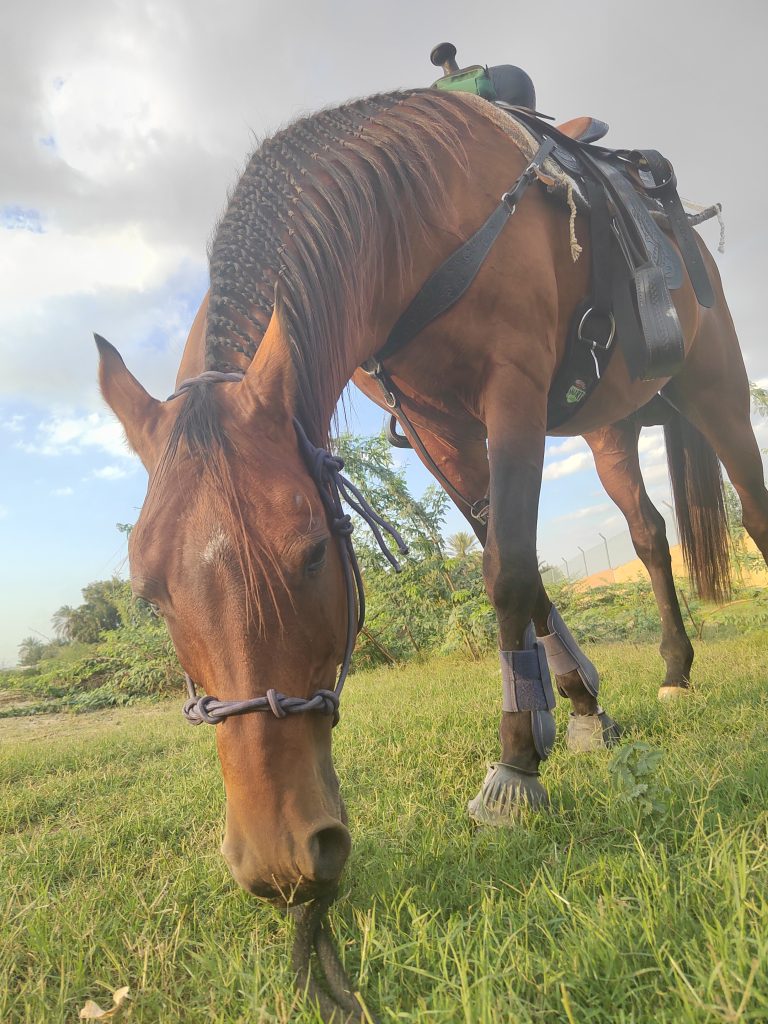
I will take the next couple of days or weeks to decide what to do. My biggest fear is that once a decision is made, especially if I choose to geld him, I cannot go back in time.
Gelding a 15-year-old stallion means that the surgery has to be done at the clinic, under general anesthesia, with the horse lying on his back. In foals, the testicles and scrotum are relatively smaller, but in mature horses, the size of the cut is bigger, and the expected bleeding is much more. With young horses, the incisions are left open to heal from the inside out, but with older horses, the incisions have to be closed, and the horse has to be stalled for the next 24 hours. After this initial period, he has to be exercised to prevent swelling around the sheath area.
Gelding a 15-year-old stallion means that there are a 50-50 chance that his behavior will drastically change in around six months’ time. If his behavior changes, I’m confident I will have the horse of my dreams. But if it doesn’t, it will be even more difficult for me to sell a gelding with a bowed tendon that is not suitable for stable or school work. I would never want him to end up in bad hands. That’s why I always thought that if I needed to sell the horse, I could refer to breeders instead of riders, but gelding him will completely invalidate this option.
Have you ever had to make a similar choice with your horse? What did you decide in the end? How was your experience with a newly-gelded 15-year-old horse? Let me know in the comments below.


